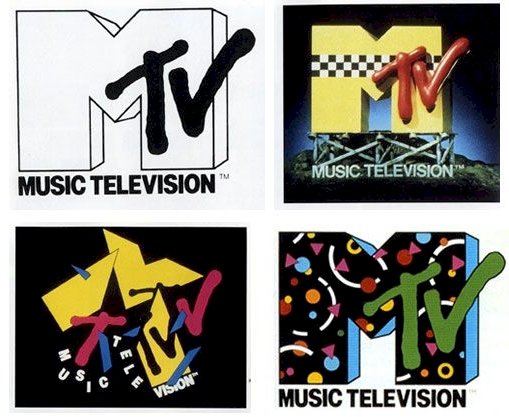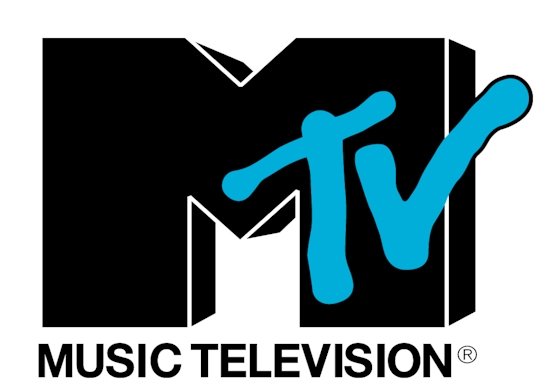This is a look at the MTV logo and Its History.
Since 1981, MTV has been bringing the latest and greatest in music and music videos to viewers across the world. The channel is an icon in pop culture and has been a powerful influence within the music world. How, though, did MTV get started, and how were they able to soar above the competition in terms of their popularity, influence, and audience? In this article, we’ll look at the history of MTV and the role its iconic logo has played in the channel’s worldwide success.
History of MTV
MTV was first launched on Saturday, August 1, 1981, with the phrase, “Ladies and gentlemen, rock and roll”, and the first music video played on MTV was “Video Killed the Radio Star” by The Bugles. Since the very beginning, MTV was designed as a platform for music videos. These videos were played 24 hours a day, 7 days a week, and were chosen by video jockeys, or VJs as the station called them.

Even in MTV’s youth, the channel was instrumental in shaping the music industry. Before MTV, what the radio stations were playing almost completely dictated which music was popular. Shortly after MTV’s launch, though, records stores began selling large amounts of music that were not on the radio at all, including songs from artists such as Bow Wow Wow, Men at Work, and Human League. MTV is also credited with helping bring about the Second British Invasion by featuring music videos from British artists who were, at the time, producing more music videos than their American counterparts.
In instance after instance since then, MTV has been at the spearhead of youth and music culture. The channel introduced the Video Music Awards (VMAs), helped black artists break through the “color barrier” that had been holding many of them back, and has hosted music events including performances on New Year’s Eve at Times Square and the All Access Week music festival.
Today, however, the popularity of MTV has seen a steady decline. With the rise of the Digital Age, today’s youth are far more likely to look up a music video on YouTube than they are to wait for it to come on MTV. To survive, MTV has moved away from playing music videos, relying instead on original comedies and reality shows, though the channel did recently announce that they would start playing more music videos again on the series MTV Unplugged.
Regardless of the recent decline in MTV’s popularity, the footprint they have left behind on the music world and our culture at large is undeniable. What role, though, did the channel’s recognizable logo play in cementing its success?
The History of the MTV Logo
 Over the years, the MTV logo has seen three different iterations. The first MTV logo was designed by Manhattan Design in 1980. This original logo featured a slightly abstract design of the letters “MTV” complete with a gloved hand holding a musical note.
Over the years, the MTV logo has seen three different iterations. The first MTV logo was designed by Manhattan Design in 1980. This original logo featured a slightly abstract design of the letters “MTV” complete with a gloved hand holding a musical note.
This logo, however, only lasted for a year and was never actually around when MTV finally launched. In 1981, the channel switched their logo to a design more similar to the one we are now familiar with. This design featured a large “M” with a much smaller “TV” positioned at the bottom right corner of the “M”. Beneath this were the words “Music Television”.
This was the logo used by the station until 2010 when MTV began their transition away from playing music videos. At this point, the channel chose to remove the words “Music Television” from the bottom of the logo, though not much else about the logo changed except for the fact that the height of the logo was squashed in a little.
Design Elements of the MTV Logo
The design of the MTV logo looks much like the design elements you see in graffiti art. This resemblance to graffiti is no coincidence, as both MTV and graffiti tap into many of the same ideas of freedom and rebellion, and both are geared toward the same, young audience.
Another significant design element of the MTV logo is the size and prominence of the “M” in the logo compared to the other two letters. At the beginning of MTV, the entire focus was on the music. In every way, the channel lived up to the name “Music Television”. It comes as no surprise, then, that the designers of the MTV logo chose to make the “M” in the logo much more prominent than the “TV”.
Lastly, one interesting aspect of the MTV logo’s design is its lack of dependency on a color scheme. The base logo is designed using only black text, though the channel has featured the logo in a variety of colors throughout the years in various promos. This ability to change the color scheme of their logo at will has served as a valuable marketing tool for the channel, allowing them to stay as diverse as the music they spotlight.
The popularity of the MTV Logo MTV has long relied on its recognizable logo and the channel it represents to move music up and down the charts. However, there are also plenty of examples of the channel leveraging the popularity of their logo to move products as well. The MTV logo has been featured on a wide variety of products, ranging from clothing to duffel bags to notebooks. MTV’s ability to launch product lines based almost entirely on the popularity of its logo is certainly not unusual; creating product lines centered around a popular logo has been a lucrative business model for countless brands.
MTV has long relied on its recognizable logo and the channel it represents to move music up and down the charts. However, there are also plenty of examples of the channel leveraging the popularity of their logo to move products as well. The MTV logo has been featured on a wide variety of products, ranging from clothing to duffel bags to notebooks. MTV’s ability to launch product lines based almost entirely on the popularity of its logo is certainly not unusual; creating product lines centered around a popular logo has been a lucrative business model for countless brands.
 Aside from appearing on products, though, the true testament to the popularity of the MTV logo is the impact that it has helped leave on the music world. The MTV logo has been the standard for a channel that has been introducing us to new artists and breaking barriers since 1981. In this way, the MTV logo will forever be memorialized as one of the most important and popular symbols in pop culture.
Aside from appearing on products, though, the true testament to the popularity of the MTV logo is the impact that it has helped leave on the music world. The MTV logo has been the standard for a channel that has been introducing us to new artists and breaking barriers since 1981. In this way, the MTV logo will forever be memorialized as one of the most important and popular symbols in pop culture.
—————
LogoMyWay has over 30,000 logo designers from all over the world ready to create your music logo. You can run a logo contest and see logos being submitted in real-time from our design community, or use our Music Logo Maker and make your logo in less than 10 minutes. Once you design your own logo you can download the high-resolution logo files and use your new logo right away.







